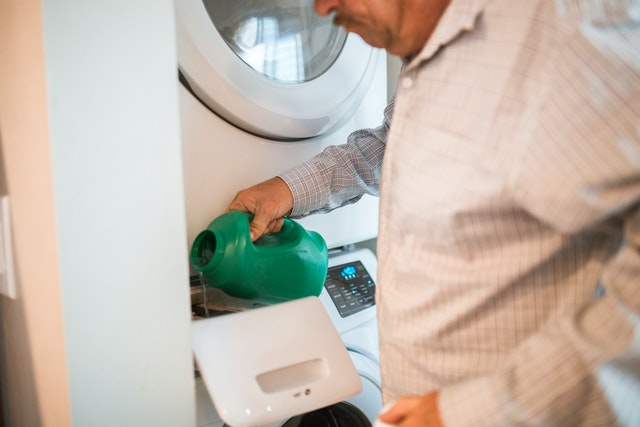Laundry stripping is the latest social media sensation. With videos raking in millions of views, social media "gurus" claim the aggressive cleaning and soaking method can revitalize dingy clothing.
According to advocates of the practice, stripping cleans fabric of buildup from detergent, fabric softener, and soil. As evidence, laundry strippers post videos of bathtubs filled with brown or discolored water after overnight soaks.
Despite positive reviews from proponents, fabric-care scientists explain that discolored water is a result of buildup and dyes and fibers. Stripping is a harsh process and is not suitable for all fabrics, especially delicate materials.
Effectiveness of Laundry Stripping

Despite its aggressiveness, laundry stripping is an effective process. What makes it effective is the chemical solution of washing soda, borax, powdered detergent, and hot water.
Because the process can also leech dyes and natural oils in fabrics, you must check laundry care tags. The tag should state whether a material can handle hot water soaking.
Laundry Stripping and Fabric Safety Concerns

Despite the hype, laundry stripping is not safe for many fabrics. Some items you should not put through the process include:
- Wool
- Workout clothes (spandex)
- Cold-water clothing
- Dark fabrics
Laundry stripping is most effective on light-colored sheets and towels. These items' thickness, size, and bulk make detergent buildup more likely.
How To Strip Laundry

Some washing machines allow for extended soaks, but that does not mean they can handle the stripping solution. Many appliance manufacturers like Maytag do not recommend laundry stripping in a washer. Manufacturers recommend trying traditional detergents and additives in a long, hot machine soak followed by a rinse cycle.
If you insist on trying the laundry stripping process, you will want to use a large bucket or your bathtub. The process has six steps:
- Fill your preferred reservoir with extremely hot water.
- Mix 1 cup powdered laundry detergent with 1/4 cup of borax and a 1/4 cup of washing soda.
- Submerge laundry in the solution and stir.
- Leave the laundry in the solution overnight, stirring occasionally.
- Drain the reservoir and rinse the laundry in the washing machine or by hand.
- Dry the laundry as usual.
Frequency of Stripping

While some people might want to use laundry stripping often, it is best to reserve the method to only a few times per year. Performing the process too often can damage your fabrics. Also, buildup does not occur fast enough to warrant the method over two to three times per year.
You can usually tell when materials need stripping. Fabrics can feel sticky, smell stale, or feel coarse. Towels might lose their absorbency, and color can become faded or dingy. You should only use stripping when clothing or materials show signs of buildup.
Avoiding Build-Up in the First Place

Laundry stripping is unnecessary if you take necessary precautions when doing laundry. Arguably, the best way to avoid stripping is to use the correct amount of detergent. Too many people use too much detergent. You can also try a few other techniques, including:
- Not adding detergent and softener together
- Adding softener during the rinse cycle only
- Using an extra rinse cycle
- Not loading the washer over 3/4 of the way
- Reading detergent directions for measurements
Laundry stripping is effective for removing detergent and soil buildup. Unfortunately, the process can also strip dyes and natural oils, meaning it can harm some fabrics. It is better to use an extra rinse cycle and accurate detergent measurements to avoid buildup altogether.


